Montgomery Advertiser moves to historic downtown building
When Montgomery was barely 10 years old, the newspaper that would become the Montgomery Advertiser was here — telling its stories, reflecting its views, informing its communities. Nearly two centuries later, the Advertiser is now doing that work from a new address on one of the nation's most historic streets.
Starting this week, the Advertiser’s mission continues on Dexter Avenue at a new office in Kress on Dexter. It’s a facility that has a lot in common with Advertiser: Both are tied to the 1800s, and both have undergone major transformations and evolved to meet Montgomery’s 21st century needs.
"While technology is an important tool for us as journalists, we believe it's also important to maintain a physical connection to the community here," Executive Editor Brad Harper said. "Kress on Dexter fits that need by putting us at the heart of downtown, inside a historic building along a historic street, where a cross-section of the community congregates. The fact that Prevail Coffee is next door doesn't hurt − that's another an important tool for journalists."
The Advertiser's new office on Dexter Avenue sits within view of the Alabama Capitol building and Dexter Avenue King Memorial Baptist Church. It's steps away from a square where enslaved men, women and children were once sold at auction and where Rosa Parks boarded the bus each day. The destroyed building where Parks once worked as a seamstress has been converted to a pocket park next door to the Kress building, and a statue of Parks waiting for the bus now stands along the street nearby.
Kress on Dexter opened in 2018 after an elaborate renovation that lasted more than a year and sought to preserve historic aspects of the building. In October it became the new home of The Eagle Institute, an Air University Innovation Center with that brings together residents, government, industry and academia to help boost innovation within the Air Force and elsewhere.
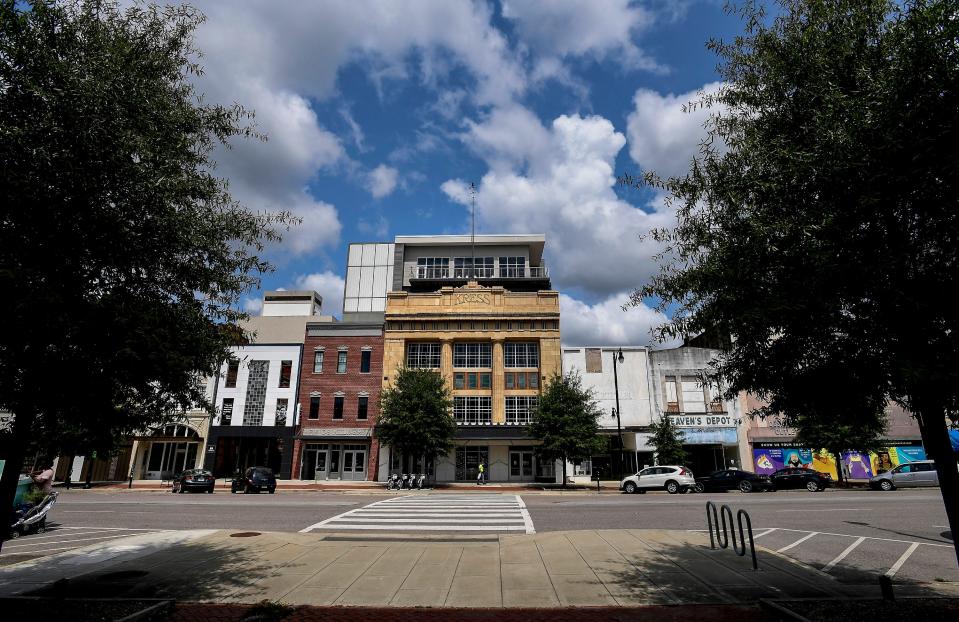
"The revitalization of downtown Montgomery continues," said Sarah Beatty Buller, co-founder of Montgomery Builds — which began its mission to rebuild downtown Montgomery's culturally relevant historic spaces with Kress. "I couldn’t think of a better fit for the Advertiser — positioned in the center of downtown on historic Dexter Avenue."
The Advertiser’s move to Kress on Dexter comes after almost 21 years at 425 Molton St., the corner of Molton and Maxwell Boulevard.
That $7.3 million building near the riverfront opened in 2002. Over the two decades at its old facility, the staff produced both a daily newspaper and a 24-hour online news service, but it was also a family. The Advertiser lost and mourned friends while in its Molton Street building, including executive editor Paula Moore in 2004, and copy editor and legendary quipper Hugh Owen in 2009. This year, reporter and columnist Alvin Benn — who worked in journalism for more than 50 years — died at 83.
Since the pandemic began in 2020, the Molton Street newsroom office space has been widely unused. However, the Advertiser’s globe still stands atop the production and distribution facility next door, which remains in operation. Its press continues to print the Advertiser just as it has for decades, while also printing publications for customers across the nation.
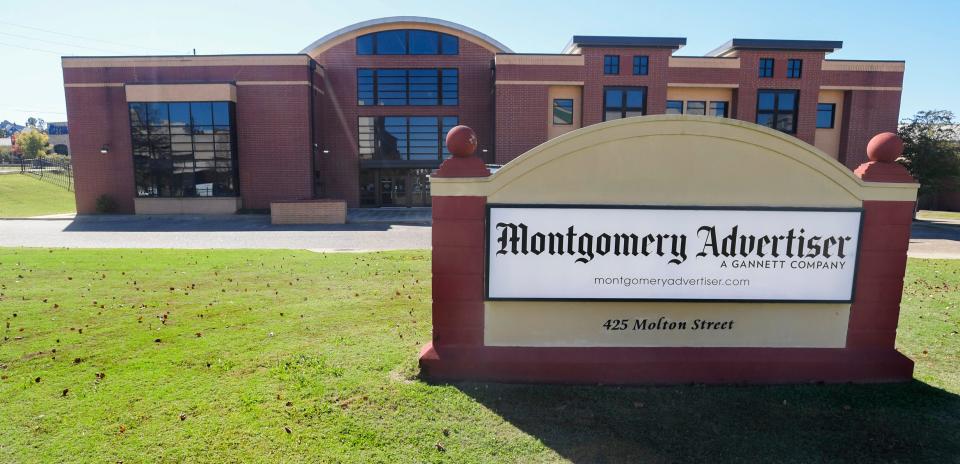
The Advertiser in history
The first incarnation of the Advertiser was The Planter’s Gazette, which began to publish in 1829, the same year Andrew Jackson began serving as the seventh U.S. president. It would be rebranded as the Montgomery Advertiser in 1833.
One of the earliest recorded locations for the Montgomery Advertiser’s office was on Perry Street, “a few doors below the Madison House” according to a pre-Civil War issue of the Advertiser from 1858. At the time, the Advertiser was owned by N.B. Cloud and G.H. Shorter (the editor). Workers used steam power to print not only the Advertiser, but books and other works.
In 1928, the Advertiser waged war against the Ku Klux Klan through a series of editorials by editor Grover Cleveland Hall Sr. This work would be honored with a Pulitzer Prize. However, the paper's reporting in the late 18th and early 19th century − an era filled with lynchings and terror − often failed the community, leaning on stereotypes while treating racial violence with indifference.

R.F. Hudson joined the Advertiser staff in 1903 and invested in the company as he rose through the ranks. He bought the Advertiser in 1935, and by 1940 he’d purchased competing newspaper, The Alabama Journal.
The Advertiser was at 200 Washington Ave. for 62 years starting in 1940. From there, it documented the civil rights movement, Rosa Parks’ arrest in 1955 and the Montgomery Bus Boycott from 1955-56 to desegregate city buses. The Advertiser was purchased in 1963 by Carmage Walls, who owned a large group of the South’s newspapers. Two years later, hundreds of civil rights activists walked 54 miles in the Selma to Montgomery March for voting rights.
The Advertiser was sold to Multimedia Corp. in 1968. This was an era when improved production equipment and more skilled personnel were added. By 1970, Advertiser editor and publisher Harold Martin won a Pulitzer Prize for a series on drug experimentation in state prisons.
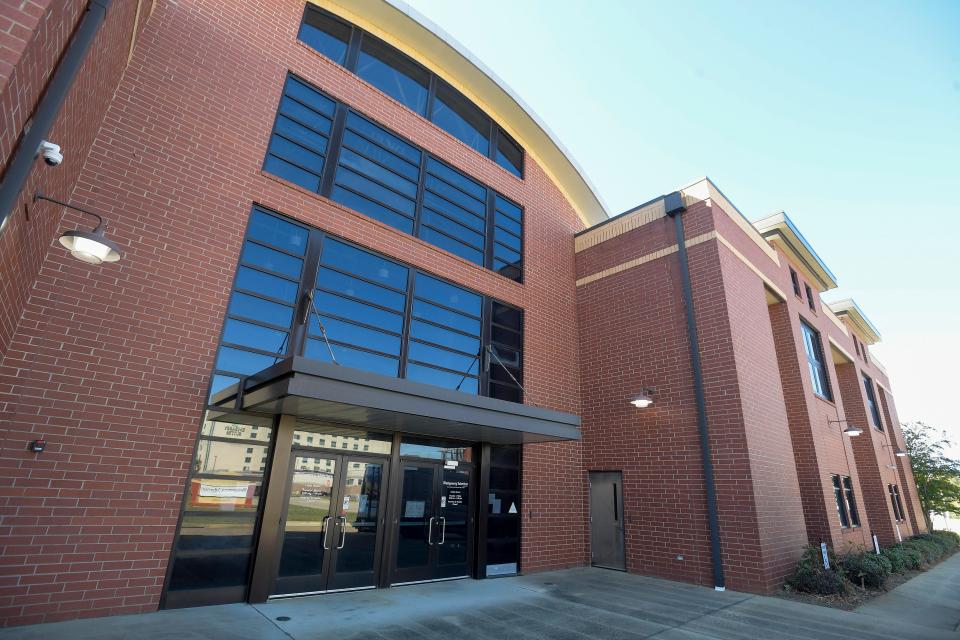
For several years, the Advertiser would publish in the morning, and the Alabama Journal printed in the afternoon. That continued until 1993, when the Journal merged with the Advertiser.
Gannett Corporation, the parent company of USA Today, acquired the Advertiser after merging with Multimedia in 1998. For several years after, the Advertiser produced multiple nightly editions, with story variations for different parts of the River Region.
The Advertiser moved into a newly built office at 425 Molton St., in 2002. While the office space remained important as a gathering point, technology made it less crucial for day-to-day coverage. That proved to be invaluable during the pandemic, ensuring daily operations could continue while the staff was isolated.
As it moves into the new downtown office, its pledge is to continue to tell the community's stories with honesty and integrity, and in ways the paper's earliest readers couldn’t have imagined, Harper said.
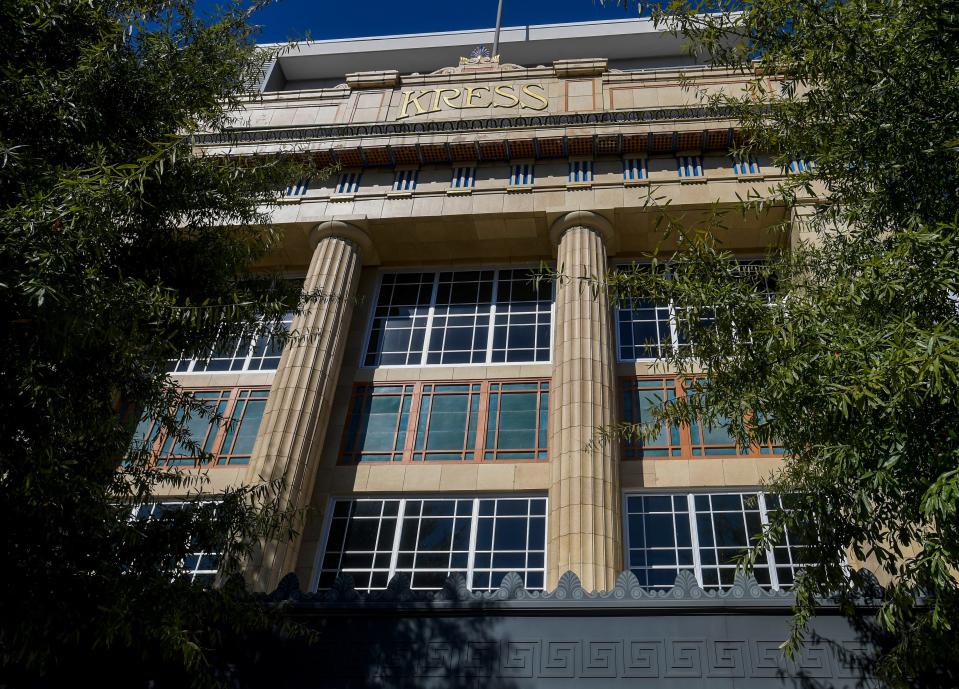
Kress building in history
Before the current, multi-use Kress on Dexter facility existed, there was another Kress in Montgomery. The S.H. Kress & Co. department store opened in 1896. In 1927 building was destroyed by fire. Architect George E. Massey rebuilt it in 1929, and the three-story Kress store remained open until the mid 1990s.
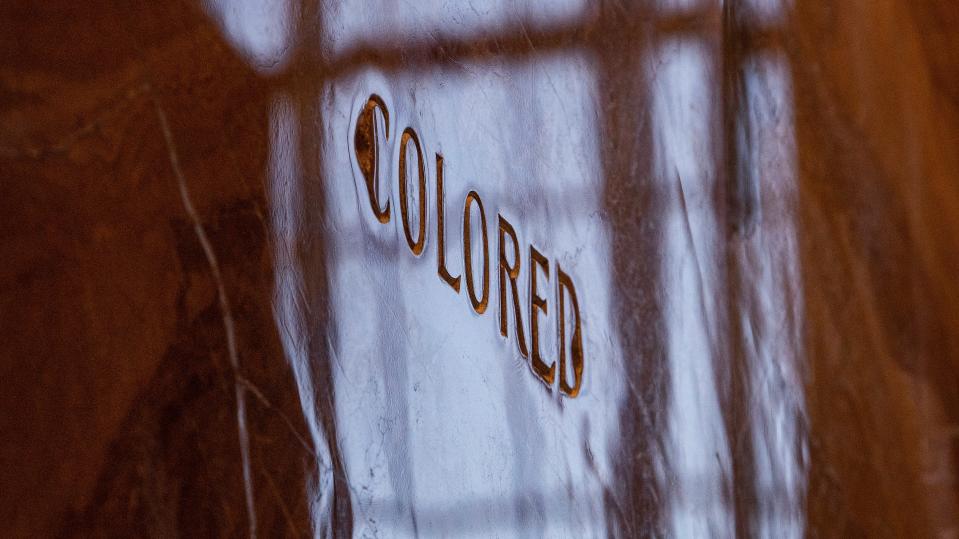
After sitting vacant for years, it was purchased and a $20 million restoration process began in 2014, which included the addition of two new floors. With 115,000 square feet of space, Kress on Dexter opened in 2017. It has retail on the first and second floors. The Advertiser will take over office space on the third floor. There are 26 residential units on the fourth and fifth floors.
Air University Commander Lt. Gen. Andrea Tullos said The Eagle Institute will serve as "connective tissue" to bring people and ideas together, a common theme during the rebirth of the Kress building.
"Kress on Dexter continues to be a hub for community, fresh ideas, and for celebrating Montgomery’s unique story and promise," Buller said.
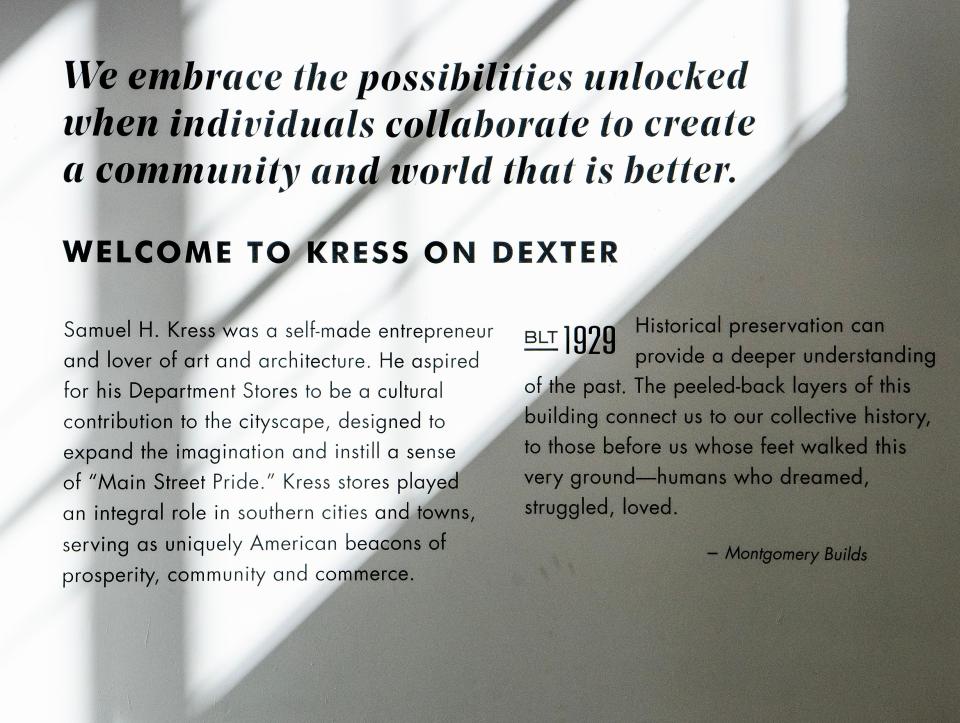
A lot has happened in the past 20 years
It’s just a blip in the Advertiser’s 194 year history, but the two decades the Advertiser has spent on Molton Street was period of transformation in Montgomery. During that time, the city saw huge gains:
Riverwalk Stadium was built in 2004 as a home for the Montgomery Biscuits baseball team.
Hyundai’s manufacturing plant opened in December 2005.
Several new hotels were built, including Renaissance Montgomery Hotel & Spa at the Convention Center in 2008. Along with being a luxury hotel and restaurant, Renaissance is home to the Montgomery Performing Arts Centre and the city's convention center.
In response to other gains, the downtown restaurant and bar scene began a revival.
In 2018, EJI opened its Legacy Museum and The National Memorial for Peace and Justice.
The Montgomery Whitewater facility for rafting and kayaking was just unveiled this year, using massive, man-made pumps to power water through an adjustable course surrounded by amenities.
Montgomery Advertiser reporter Shannon Heupel covers things to do in the River Region. Contact him at sheupel@gannett.com
This article originally appeared on Montgomery Advertiser: Montgomery Advertiser moves offices to Kress on Dexter

